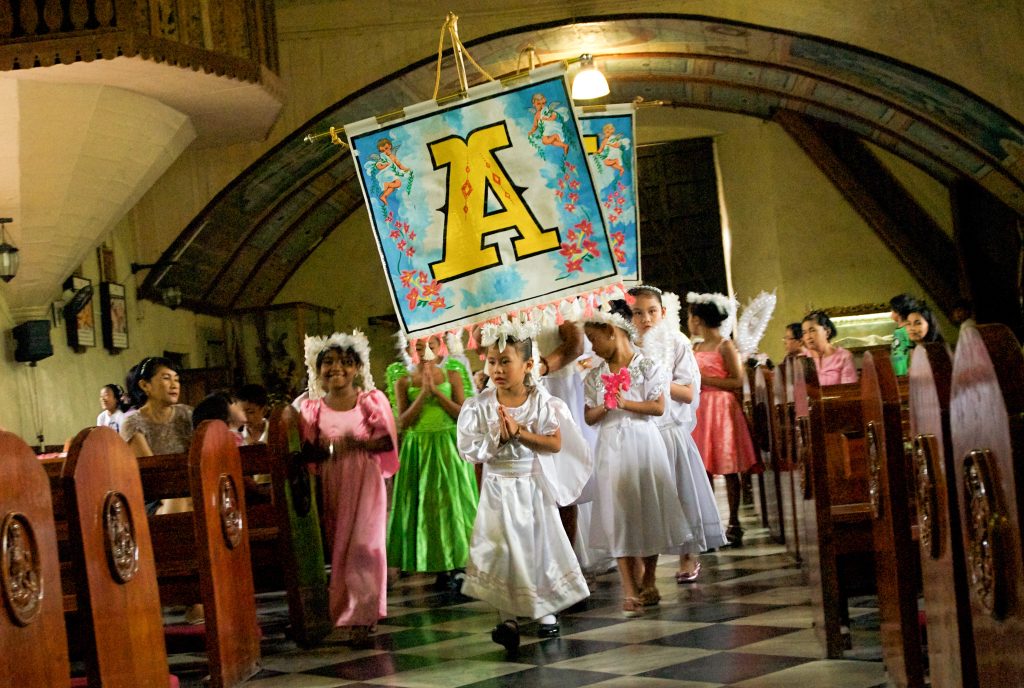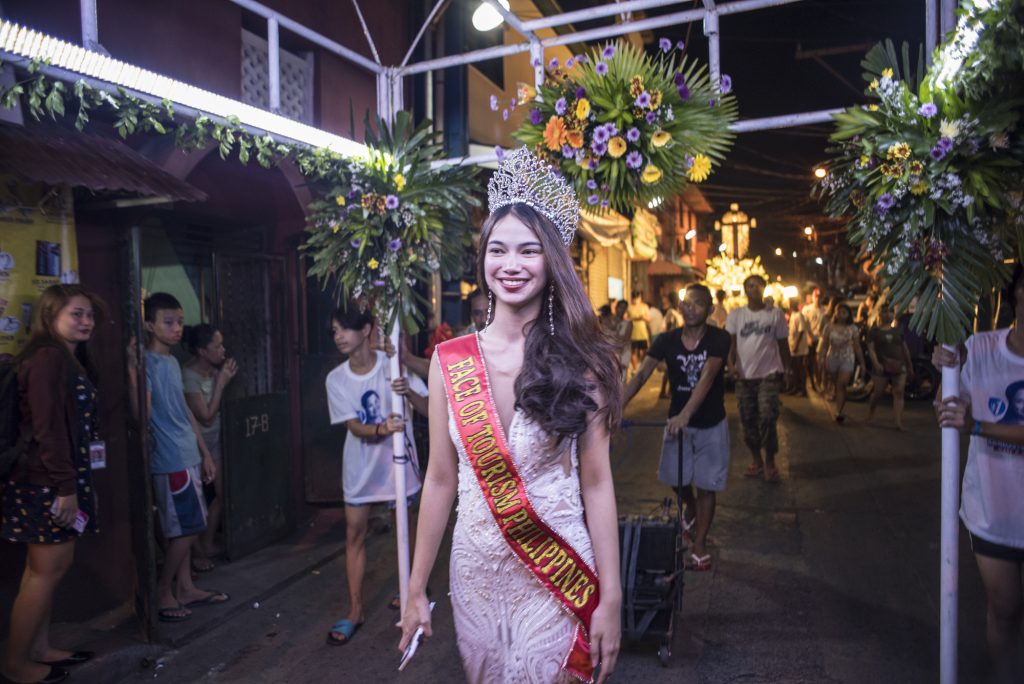The month of May in the Philippines is a season for fiestas. Some fiestas are meant to be religious, some quite secular.
May is also the month of flowers in the country, as well as the last month of a sweltering Philippine summer (at least before the early onset of the rainy season due to climate change).
The fiestas are a perfect excuse to stay out in the streets in minimal clothing and quench thirst with all sorts of beverages, including chilled alcoholic ones.
The Santacruzan is among the summer festivities in the country that are meant to be religious and traditional. Introduced by the Spanish friars in the late 19th century, the Santacruzan commemorates, through a procession, the homecoming of Queen Helena after a long arduous journey of searching for the cross of Jesus.
The Santacruzan that was introduced to the archipelago seems to be not from Spain but from Mexico, where the Philippines was mostly governed during the colonial period.
The Santacruzans being held in May in the Philippines must have been a solemn event in its early years. It must have been honest-to-goodness religious processions.
However, for years now, many Santacruzan events are not publicized and promoted as religious processions that they are supposed to be. They are now announced as “pageants.” Yes, as in beauty pageant, evoking the extravagance and eroticism of the gown parade of the Miss Philippines.
To prevent parish priests from “meddling” in a Santacruzan, many of these events are now held outside the church, especially those that feature gown-wearing gays who don’t even walk but ride on roofless motorized vehicles to show off their gowns, which are rented or borrowed from couturiers.
Traditionally, the procession begins in the church patio, snakes around community streets, with the onlookers holding lit candles (because the event is usually held at night), and winds up back in the church patio, and, with everyone finally herded inside the church, people attend Mass.

The Santacruzan is intended to be the culmination of a month-long religious celebration known as the “Flores de Mayo,” Spanish for “Flowers of May.”
After a daily strewing of flowers by young girls on the image of the Virgin Mary inside the parish church, the festivity moves outside with a grand event — the Santacruzan.
Though held in the church patio and in the streets, it is meant to be a solemn procession, not a rowdy parade, nor a glittering gown competition, which is what it has become through the years.
The crucifixion is at the core of the Catholic faith, and it seems appropriate, if not necessary, that the Church remains visible, even influential, in popular events that recall the cross and Jesus Christ’s crucifixion.
The Santacruzan now being held as a pageant, an extravaganza for local and foreign tourists, is another indication of how the Catholic Church has been losing its grip on the faithful’s consciousness.
If backless gowns or those with plunging necklines cannot be worn by the queens and the sagalas (young maidens), if cross-dressing gays with lovely faces are discouraged by bishops and priests to join the procession, if wild dance parties could not be held after the processions, the people simply pull off a Santacruzan of their whimsical liking outside the church, without the priests.
But then so many other traditional religious commemorations have been secularized into garish festivity, even the Moriones in Marinduque and the Dinagyang in Cebu. People perform in the showy rituals, the public sweats and stares, and gets amazed, but hardly expect small and big miracles in their lives afterwards.

The only extremely popular religious event in the Philippines where participants and awed onlookers expect some kind of miracles afterwards is the Black Nazarene procession in Quiapo in January.
The influence of the Church on the faithful has really weakened over the years. It should find ways to reintegrate itself into people’s lives more meaningfully even in social and tourism-oriented events.
In the case of the Santacruzan, parish churches should go back to organizing the event themselves so that its religious and spiritual values can be re-established. Parish priests and devout parishioners seem to have given up so easily when irreligious personalities (including couturiers, cross-dressing gays, and hedonist corporate executives) begin to put up their own garish and gay Santacruzans.
Some parish dynamism and enthusiasm for well-loved traditional religious festivities could save the Santacruzan from bohemian perdition. The immersion of parish Church officials (priests and lay leaders) in festivities patronized by the faithful could lead to stronger faith and more upright living.
Danny Vibas is a journalism professor who writes about culture and showbiz for various publications in Manila.







